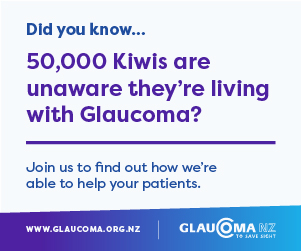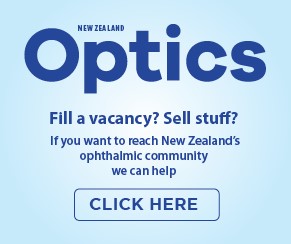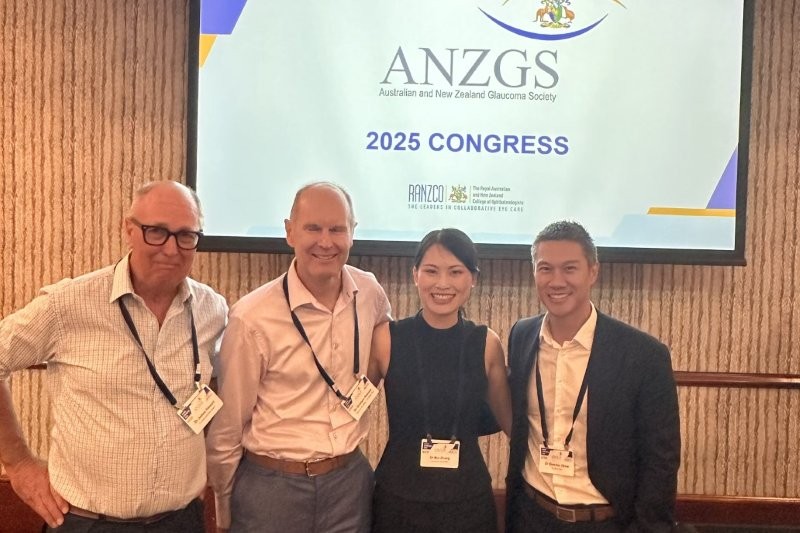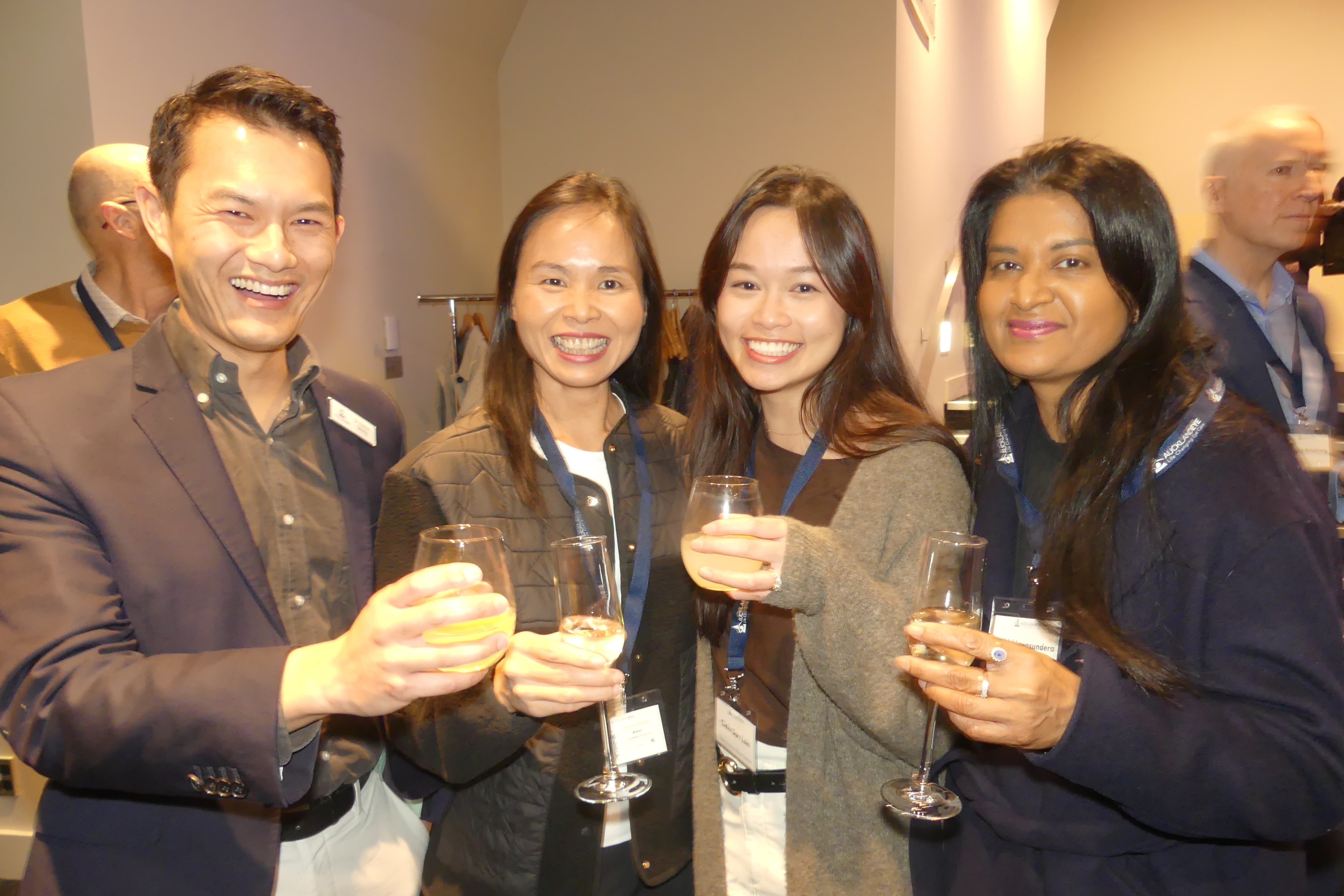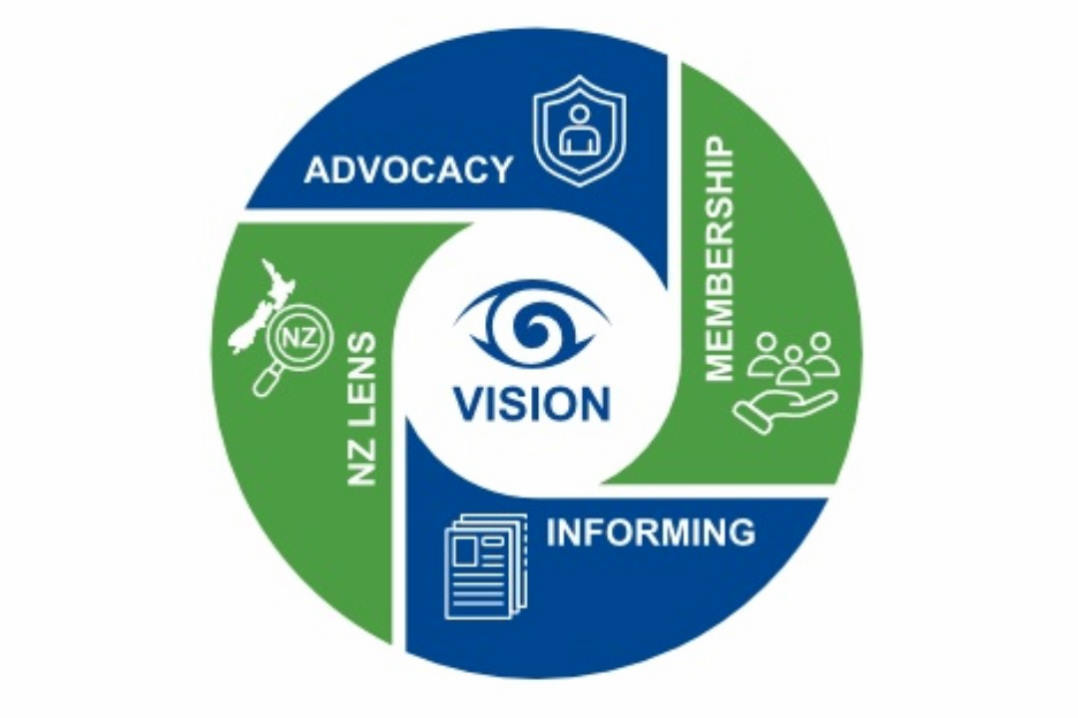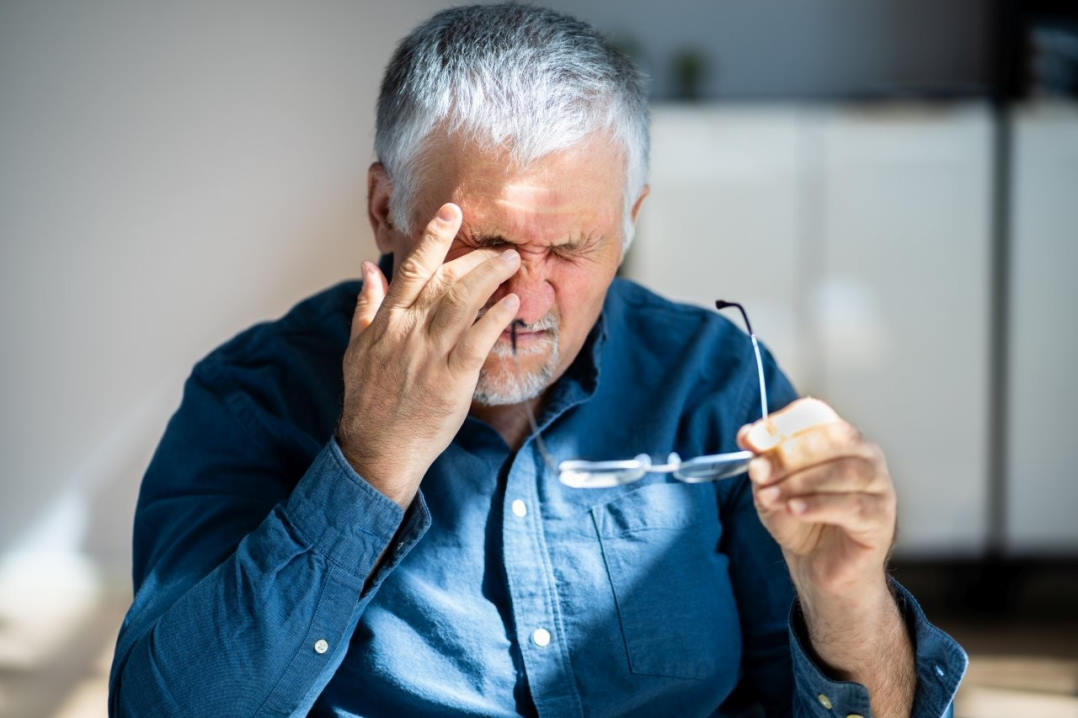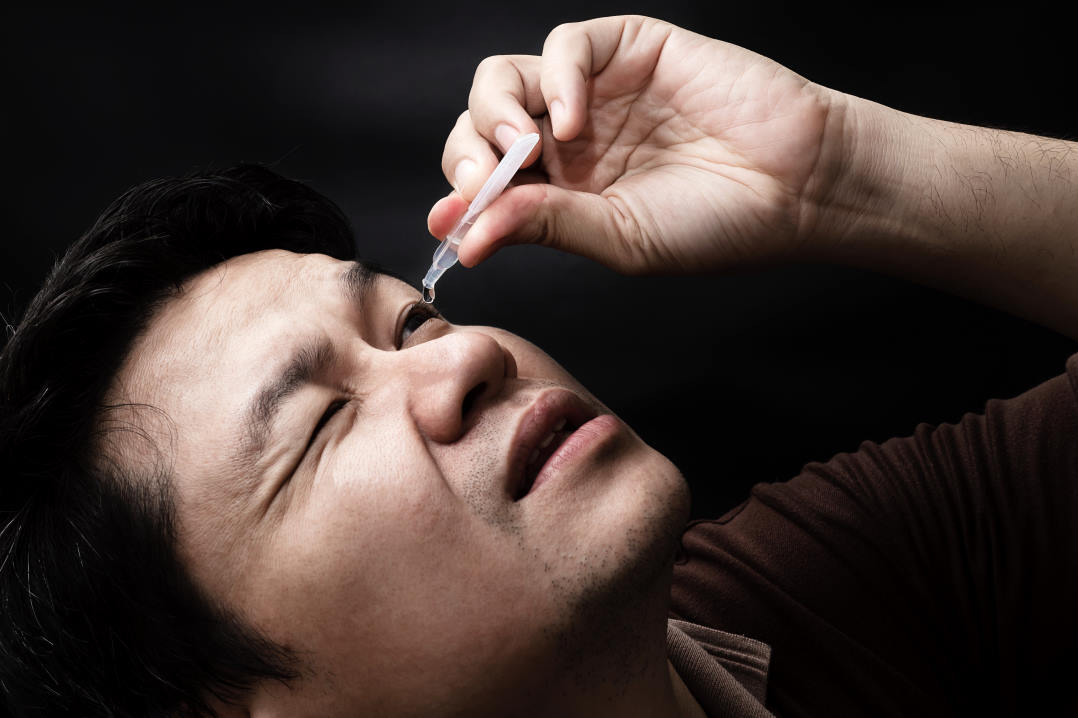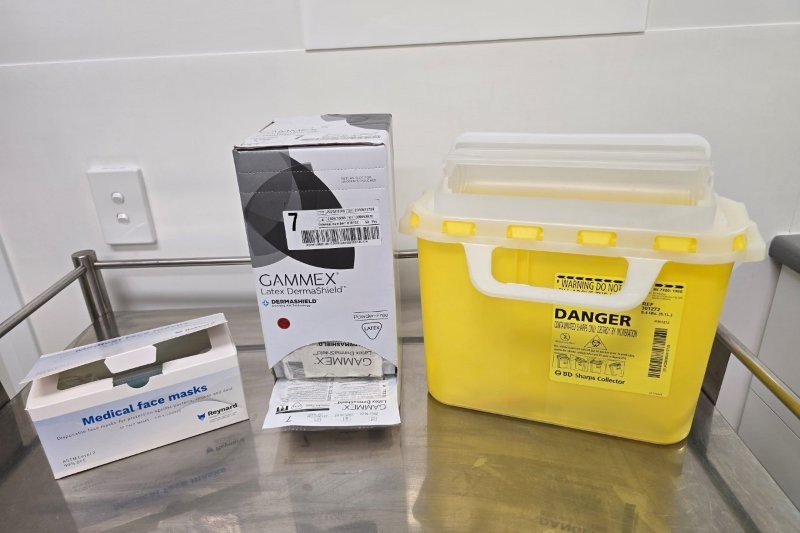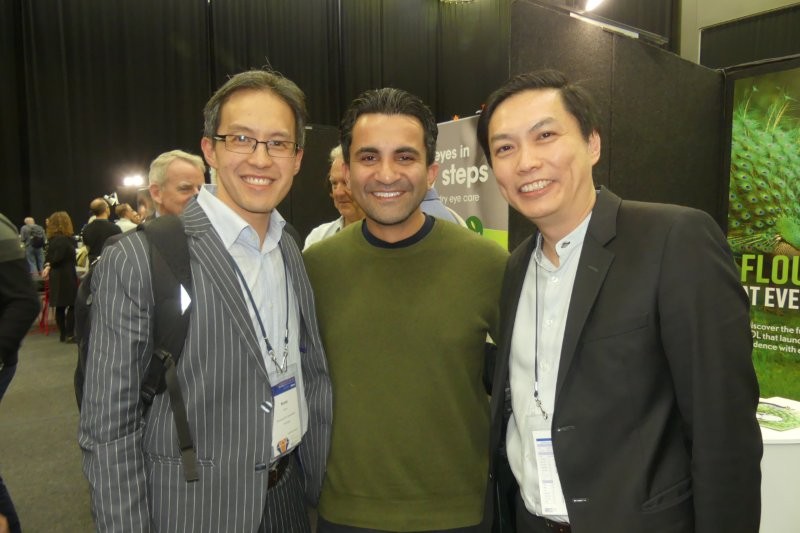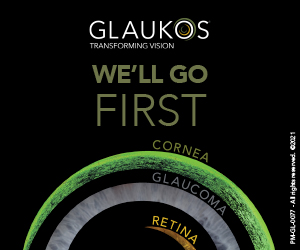ANZGS Congress goes off with a bang!
Sandwiched between the brutalist concrete blocks of the Western Australia Commonwealth Court and the Perth Concert Hall, the Duxton Hotel was the setting for the 2025 Australian and New Zealand Glaucoma Society (ANZGS) Congress.
There, on the western edge of the world’s largest island, we were joined by speakers from Japan, Singapore, Korea, Indonesia, Malaysia, Poland and Germany, which added a more international flavour than in previous years.
Things kicked off for this annual gathering of Australasia’s glaucomatologists with a session on basic and translational science giving a view ahead of new research which could be coming to a clinic near you in the next few years. This included the emerging field of metabolomics, which may allow the analysis of tears to detect a stressed optic nerve or retinal ganglion cells.
A great example of translational research was presented by Professor Bill Morgan from Western Australia, who collaborates with Dr Anmar Abdul-Rahman of Counties Manukau Health on retinal photoplethysmography. The research analyses retinal blood vessel wave forms and, through some heavy-duty mathematics – with some artificial intelligence (AI) help – can now reliably predict intracranial pressure non-invasively. This is now being used clinically by neurosurgeons in Perth.
Not surprisingly, this was one of several research projects utilising AI, but they are all using AI to augment analyses, searching for patterns in genetic variations and classifying visual fields, rather than AI being used as a diagnostic tool.
The Lowe Lecture was presented by Professor Norbert Pfeiffer from Germany. He revealed that despite increasing numbers of glaucoma surgeries in Germany the waiting list for trabeculectomies is rising. He blamed this on the decreasing number of surgeons confident with this operation with trainees favouring MIGS (minimally invasive glaucoma surgery) or MIBS (minimally invasive bleb-forming surgery). It highlighted the risks of de-skilling in older techniques when a new technique comes along.
Prof Pfeiffer also discussed some of the exciting new devices which could allow better titration of pressure after surgery, and combining these with implanted intraocular pressure (IOP) meters to allow continuous feedback to the drainage device and precise IOP control.
The afternoon session again focused on glaucoma surgery, with results from several centres using various techniques. One meta-analysis compared trabeculectomy and the newer PreserFlo MicroShunt. The results, in terms of IOP control and reduced need for medications, favoured trabeculectomy but at the cost of a greater risk of hypotony, slower visual recovery, significant number of returns to theatre and greater number of clinic follow-ups (an average of 13 appointments in 12 months in one centre!).

Dr Graham Reeves (front) trying out Glaukos’ iStent infinite dry lab at ANZGS
Then it was into the traditional glaucoma surgeon’s confessional where various gnarly cases were presented, and collective absolution given about things not going to plan. One interesting approach to a leaking trabeculectomy bleb was cross pollination from anterior segment surgery with the use of UV crosslinking to successfully seal a small but persistent leak.
Every year at this meeting there is an ‘Off-Piste’ lecture where something non-ophthalmic is presented. This has been re-named the ACB Molteno Off-Piste Lecture after the pioneering Dunedin professor who had many eclectic interests outside of ophthalmology.
This year’s lecture, ‘Discovering the Universe from WA’, was given by Professor Steven Tingay, an astrophysicist from the Curtin University. He duly blew our minds regarding the magnitude of space and the different ways in which we can look at the stars. His specialty is radioastronomy and he discussed the international project to build a radio telescope array in Western Australia, with 130,000 antennas covering an area just larger than the size of the Netherlands! This aims to analyse radio waves created soon after the Big Bang – 13 billion years ago. His talk segued nicely into our conference dinner, overlooking the lights of Perth and broken up by some moon-, star- and planet-gazing from telescopes provided by local astronomers.

Prof Steven Tingay. Credit: MCB Photographics
Saturday dawned bright and clear (as it often seems to in Perth) and I was tempted out for a run along the beautiful smooth riverfront tracks made possible by the generosity of the local mining companies. The only off-putting thing was the local birds sounding like they were laughing at me the whole way – damned kookaburras!
But back to the conference… A speaker from Indonesia discussed finding glaucoma cases as an addition to an existing cataract screening programme. This was followed later by one of her colleagues who discussed the production of a low-cost glaucoma drainage device, developed in collaboration with the University of Western Australia, which they hope will help the many young Indonesian patients with glaucoma for whom trabeculectomies often fail.
The third named lecture was the Gillies lecture, delivered by Professor Keith Martin, managing director, Centre for Eye Research Australia, who reviewed some of the exciting developments in neuroprotection and optic nerve regeneration including the ongoing randomised controlled trial of oral nicotinamide in patients already on glaucoma treatment, with the aim to see if it can slow visual field progression.
There were also some fascinating insights into laboratory work on regenerating axons, transforming Müller glial cells into rods and cones (with proof of light-sensing function to different wavelengths) and even a case report of a whole eye transplant that at one year was maintaining a normal IOP and blood supply (but no vision).
The conference neared its end with some cross specialty discussion with a vitreoretinal surgeon giving his perspective on times when his skills are called upon by glaucoma specialists such as suprachoroidal effusions or haemorrhage after glaucoma surgery. Last was an interesting talk on glaucoma masqueraders by a retina specialist who also has a subspecialty interest in ocular genetics. When things don’t quite add up in patients suspected of glaucoma he recommended fundus autofluorescence to check for retinal dystrophies that can mimic glaucomatous visual field defects and point to the need for electrodiagnostic and genetic testing.
That wrapped up another interesting instalment of ANZGS, leaving most of us with another day to sweat it out in Perth before the next evening flight back home.
Dr Graham Reeves is a consultant ophthalmologist specialising in cataract and glaucoma for Counties Manukau Health and Eye Institute.







